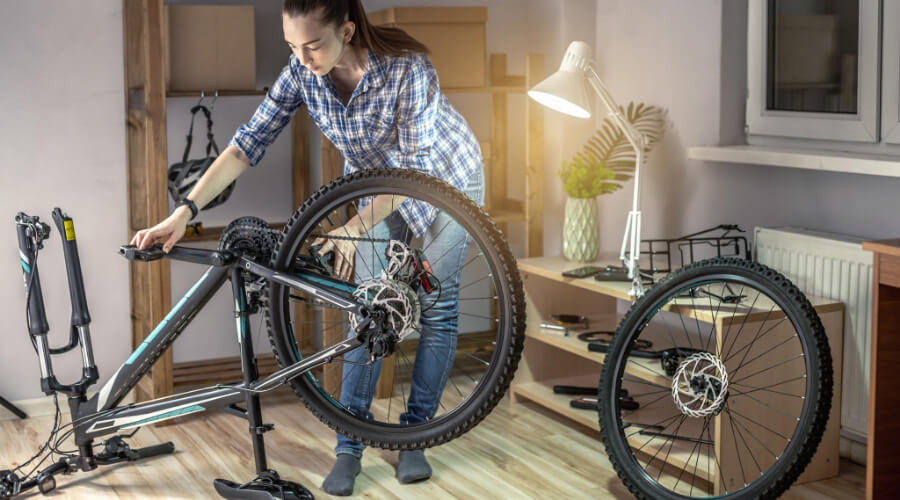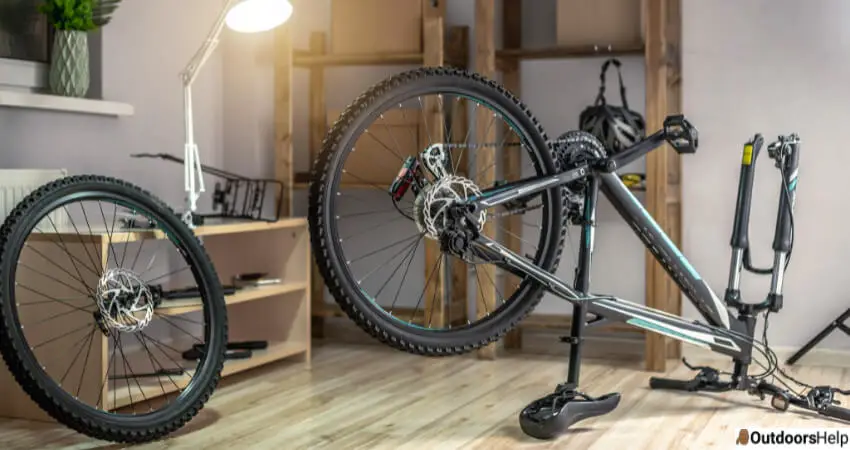New cyclists get bombarded with biking terms that are uneasy to grasp. For instance, if you are at the beginner stage, it is unimaginable to understand what cycling pros call a cockpit. You immediately ask yourself whether your two-wheeled road machine is a ground helicopter when you hear this word. There are other terminologies associated with your bike’s frame that might knock you off your feet if you listen to them for the first time. Did you know that a bike frame has a bottom bracket?
What Is The Importance Of A Bike Frame?

A bike frame is the most critical part of any bike. Everything that constitutes a bike is bound together by the frame. Be it the wheel, the chain, drivetrain, or the seat; they are all attached to the frame. Cyclists with good knowledge of biking emphasize the type of frame they choose, as this is the only part determining your machine’s durability. Courtesy of the frame, impacts, and jolts get dampened while riding.
If you are a new cyclist or have been in the biking world for a while, but you don’t know the jargon used to refer to various parts of your bike, stay with us, and you will learn all you have to know. We shall explore different bike frame parts on this page and delve into their functions and significant materials used to craft them. Keep reading!
A Detailed Overview Of A Bike’s Frame Parts

Primarily, the frame of a bike consists of two triangles. The terms front and rear triangle precisely describe the two primary components of the frame. The front triangle constitutes the top tube, seat tube, down tube, and head tube.
On the other hand, the rear triangle features the chainstay, seat tube, and seat stay. Now that you understand parts of a frame, let’s discuss them in detail;
1. The Top Tube
This tube is sometimes called the cross-bar. Whenever you mount onto your bike, you must step over the top tube. While a few bikes don’t feature the top tube at all, this component of a bike frame runs parallel to the ground for those cycles that feature it. Depending on the bike type, this component can be angled slightly or steeply.
The material used in the construction of the top tube depends on your bike’s frame. It might be aluminum, carbon fiber, titanium, or tensile steel.
2. The Head Tube
The head tube constitutes a small tube that features at the front of the cycle’s frame. Its primary purpose is to connect the wheel folk with the handlebars. They say that the cockpit and the front fork come together at the head tube in biking jargon.
At the head tube part of the frame, we encounter the entire bike headset responsible for steering the bike’s front wheel through the handlebars. As you might have guessed, the material used to craft the head tube is similar to the entire composition of the frame. Meaning, if your bike’s frame is aluminum material, then its head tube must be made of aluminum.
3. The Down Tube
Up to this point, you must be familiar with the naming of these tubes. Yes, they got names according to their position in the cycle. The down tube is the long thick tube that runs down to the cycle’s pedals or bottom bracket but originates from the head. Its starting point is beneath the handlebars.
The common features associated with the down frame are water-holding cages and your machine’s brand logo.
4. The Bottom Bracket
If you wonder what a bottom bracket is, look at the bottom of the frame, and you will see a hole where the crankset’s spindle gets inserted. If you have noticed that hole, search no further, that is your bike’s bottom bracket.
5. The Seat Tube
The seat tube of any bike is responsible for holding the saddle. This tube originates from beneath the bike’s saddle and runs down to the pedals. At one end, where the tube meets the saddle, it features a hollow tube that allows for the seat post insertion.
The hollow part of the seat tube makes it possible to adjust the height of the seating position by descending the seat post deeper or pulling it up, depending on your preferred riding position.
6. The Seat Stays
The seat stays are two thin tubes that originate from beneath the saddle and run down to either side of the rear wheel hub.
These tubes end at either side of the rear drop out, where they connect to each wheel’s axle from both ends.
7. Chain Stays
If you take a closer look at your bike’s chain, you’ll notice two tubes that run parallel to the ground but alongside the chain. These are known as chainstays. The tubes are featured on both sides of the chain, each side featuring one of them. They run from either side of your bike’s pedals to both sides of the rear wheel.
What Are The Core Factors To Consider Before Choosing Ideal Bike Frame?
As you are aware, a bike frame is a vital component of the bike as it determines the cycle’s efficiency and performance. Frames get engineered from different materials, but the commonly used materials are; aluminum, carbon fiber, and steel. Your choice of the ideal frame hinges on the following considerations:
Budget: Lightweight frames such as Aluminum and Carbon fiber are expensive. Before deciding on the best frame that comes with your bike, gauge your wallet and decide on the one affordable to you.
Terrain: The terrain you ride on most determines the type of frame that accompanies your beloved bike. For instance, if you ride on rugged terrains most of the time, you require a lightweight yet sturdy frame that dampens jolts and impacts. In this case, the aluminum frame does an excellent job.
Purpose: The purpose of the bike determines your frame choice. If you need a touring bike that hauls cargo, a steel frame is the best. However, if you intend to race or commute with your bike, select a carbon or aluminum frame.
Summary
A bike frame is a collection of various metals joined to form an interconnected solid body. This article has discussed the frame’s components in detail for you to get a better understanding.

